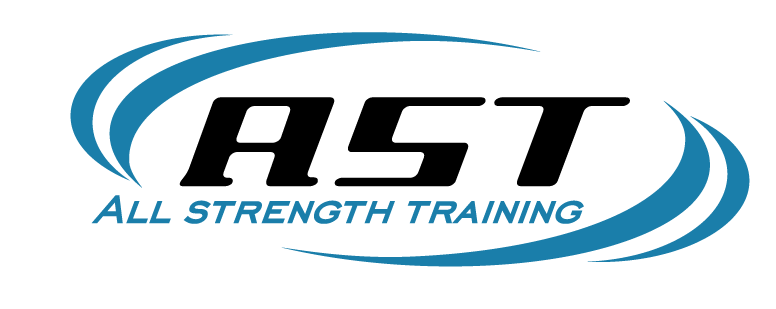5/3/1 Assistance Work: Making Progress
If you haven’t read Jim Wendler’s 5/3/1 Manual by now, you’re missing out. If you have, you know how effective it can be in improving stalled lifts very quickly and consistently. The program is incredibly simple and effective: follow your percentage work for the main lifts, do your accessory work, then go home. However, the manual doesn’t elaborate very much on the assistance work in the context of progressions, so I thought I’d show some of the ways that I’ve manipulated assistance work with different training clients and still managed to keep the overall simplicity of the program intact.
Example #1: Bodyweight Exercises
Bodyweight exercises play an important role in 5/3/1 – hell, Wendler has an entire assistance template devoted to them. However, figuring out how and when to progress them can be a little tricky. Here’s how I’ve gone about it with one of my older clients.
Client #1
Let’s use the 45-Degree Back Raise as our sample exercise. When we first started, he could do a single, full-effort set with his own bodyweight that had his form break down at about 14 reps in. We progressed it like this:
Cycle 1
Week 1 – 5×10
Week 2 – 5×11
Week 3 – 5×12
Week 4 – 5×5 (deload)
Cycle 2
Week 1 – 5×12
Week 2 – 5×13
Week 3 – 5×14
Week 4 – 5×5 (deload)
On occasion we would only add one extra rep each cycle, starting at 5×11 instead of 5×12 and working through. We repeated this scheme until he was hitting 5×20, then added a 5-lb plate behind his head and began back at 5×10. I know you’re basically only adding a rep or two per set per cycle, but in the long run, that’s probably better gains than 90% of gym members have made in the last 12 months.
Client #2
In another case, I had a client that could only get about 7 reps at a time on the 45-Degree Back Raise. We used a progression like this:
Cycle 1
Week 1 – 3×5
Week 2 – 4×5
Week 3 – 5×5
Week 4 – 2×5 (deload)
Cycle 2
Week 1 – 3×6
Week 2 – 4×6
Week 3 – 5×6
Week 4 – 2×6 (deload)
Once he was up to 5×10, I progressed him like Client #1.
I would not use a progression like this if somebody was unable to get at least 5 reps of a given exercise. However, with the exception of GHR’s and pullups, I’ve never encountered a scenario where somebody couldn’t get at least a single set of 10. In those cases, we used JumpStretch bands to provide assistance (rather than resistance) and progressively worked down in band tension until 5 reps could be performed with bodyweight only. I do this with band-assisted pull-ups since I suck at them:
Band-Assisted Pullup w/ average band
Cycle 1
Week 1 – 5×10
Week 2 – 5×11
Week 3 – 5×12
Week 4 – 5×5
Cycle 2
Week 1 – 5×11
Week 2 – 5×12
Week 3 – 5×13
Week 4 – 5×5
You can try going up more than a rep per cycle, but I’ve never had any success with it with band-assisted exercises. Once you get up to 5×20, drop band tension down to a light band, then a monster mini, then a mini, then bodyweight only. Some may feel they can progress quicker than this; I would suggest against it to prevent stalling in the long run.
Example 2: Externally-loaded Exercises
Externally-loaded is a fancy way of saying “anything more than bodyweight” – i.e. everything else. I use 2 methods here, one for the Boring But Big template, and one for everything else.
Boring But Big
After performing the appropriate 5/3/1 progression for whatever week you’re using, repeat the same lift for 5×10 at 50-60% in this manner:
Week 1 – 5×10 @50%
Week 2 – 5×10 @55%
Week 3 – 5×10 @60%
Week 4 – 5×5 @50% (deload)
If your training maxes go up the next cycle on your 5/3/1 lifts, recalculate your percents using the new max. If it doesn’t, then repeat the cycle with the same weights.
Everything Else
I use this with things like rows, side bends, extensions, etc. Pretty straightforward:
DB Side Bend
Cycle 1
Week 1 – 5x55x10
Week 2 – 5x55x12
Week 3 – 5x55x15
Week 4 – 5x55x5 (deload)
Cycle 2
Week 1 – 5x60x10
Week 2 – 5x60x12
Week 3 – 5x60x15
Week 4 – 5x60x5 (deload)
How you jump your reps is up to you – I’ve used 5-8-10 as well as 15-18-20 depending on the exercise and who I’m dealing with. Bottom line is to make as small of a jump as possible and progress as consistently as you can.
There are plenty of ways to do this, you just have to be a little creative and think simple. Keep your goal simple and small, just like you would on your main lifts. Increasing your lifts by one rep or by five pounds is still progress. Have that happen 10 times over and suddenly what started as a little extra won’t seem so little anymore, and neither will you.

great post, thanks for sharing